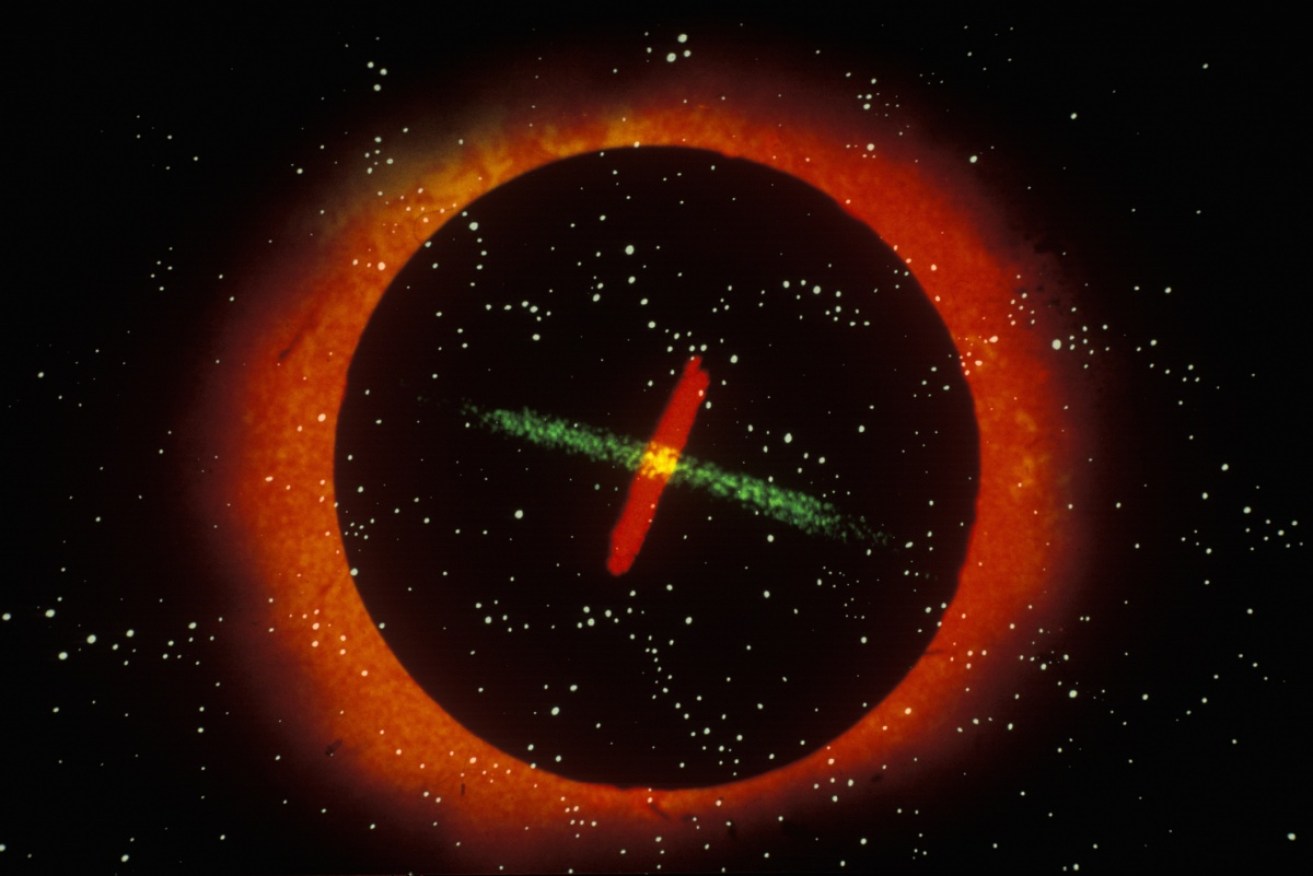Scientists work out how to hide Earth from aliens


Nothing to see here: scientists can now hide Earth ... theoretically. Photo: Getty
US scientists have come up with a cloaking device to hide the Earth from nosy extra-terrestrials – a timely discovery given last week’s news that our closest star, Proxima Centauri, is orbited by an Earth-like planet, one perhaps inhabited by intelligent beings.
Earth is most vulnerable to detection by other civilisations in the cosmos when it passes across the face of the sun, known as a transit.
If the aliens had astonishingly powerful telescopes, Earth would appear as a black dot against the shiny backdrop of the sun – which is how Venus appeared to Earthlings when it transited the sun in 2012.
More likely, though, the aliens would detect a dimming and flickering in the sun’s brightness – similar to that caused by a moth flitting close to a porch light. This is precisely how the Kepler mission has detected more than a thousand exoplanets over the last seven years.
Columbia University astronomers David Kipping and Alex Teachey, in a paper titled A Cloaking Device for Transiting Planets, suggest that the Earth could be protected from detection – or, conversely, attract attention – by the use of lasers during the hours of a transit event.
They believe aliens may already be deploying lasers to these ends.
In the paper, published in the Monthly Notices of the Royal Astronomical Society, Professor Kipping writes:
“The transit method is presently the most successful planet discovery and characterization tool at our disposal. Other advanced civilizations would surely be aware of this technique and appreciate that their home planet’s existence and habitability is essentially broadcast to all stars lying along their ecliptic plane.
“We suggest that advanced civilizations could cloak their presence, or deliberately broadcast it, through controlled laser emission. Such emission could distort the apparent shape of their transit light curves with relatively little energy …”

Bad intergalactic neighbours? No problem. Scientist have a solution. Photo: Getty
The New York-based authors offer both budget and high-end solutions, estimating “that humanity could cloak the Earth from Kepler-like broad-band surveys” by firing a 30MW monochromatic laser for about 10 hours a year.
The laser would need to be aimed at the presumed enemy – in this instance, the newly found planet Proxima b. It’s worth noting that a 30MW laser is available on eBay for about $20.
However, Professor Kipping and graduate student Teachey are probably talking about something more sophisticated than disco lighting. Still, they concede more power is needed for a thorough protection.
“A chromatic cloak, effective at all wavelengths, is more challenging requiring a large array of tunable lasers with a total power of about 250 MW.”
Alternatively, they suggest cloaking only the atmospheric signatures associated with biological activity, such as oxygen, which is achievable with a peak laser power of “just 160 kW per transit”.

Are they watching us? Photo: Getty
While cosmologist Stephen Hawking hasn’t commented on the laser plan, he’s long been on the record cautioning Earthlings from advertising their existence. And Professor Kipping has admitted that super-smart alien civilisations will probably see through laser cloaking, anyway.
As for Proxima b, it’s not known yet whether it is a transiting planet. It was actually discovered by detecting a tiny gravitational tug that it exerts on its star.
Scientists are hoping to catch the planet in transit because in observing the tilt of the planet’s orbit, they’ll be able to determine its mass. Transits will also enable scientists to study Proxima b’s atmosphere through spectroscopic observations.
Meanwhile, as we struggle to get a clearer picture of this new planet, Proxima b-lings may have already worked out our weaknesses. Which means we may need to ramp up the power of those laser beams after all.
John Elder was senior writer with The Sunday Age for 21 years. He now writes on science, climate change, birds and philosophy. He’s currently writing a book on birds, poetry and the meaning of life.








